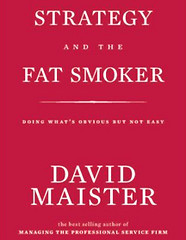With the advances in how social media is applied daily, the description of Social Media For Communication Strategy held at the University of Nevada, Las Vegas (UNLV), has a hard time keeping up even if the class does not. For example, nowhere does it mention social networks specifically, let alone the advent of social business.
But then again, this was always by design. When the three-hour session was first offered at UNLV, it was apparent that social media had a limited shelf life as it evolved. Everything changes. And only the definition seems to remain a constant.
Social media describes the technologies people use to share content, opinions, insights, experiences, and perspectives by interacting with each other in an environment.
It's not all that much different from how people are trying to define social business today. A social business, if you are unfamiliar with the term, is much like the one above with an emphasis placed on creating and optimizing a collaborative ecosystem. It isn't different, but there's a reason to go with it.
Social media was always collaborative, but social business helps people think.
Despite the cosmetic shift with semantics, calling some of the new technologies collaborative helps people move away from the thought that social media was meant to be a broadcast platform. It's not. Broadcast is simply one thing you can do online, and it's not even the most effective thing to be done.
The only downside is that defining social business in such away detracts from the real meaning of a social business. That definition was crafted by Nobel Peace Prize laureate Prof. Muhammad Yunus as one which also serves humanity's most pressing needs, e.g., hunger, poverty, etc. The person who stole it probably wasn't aware of the definition. They just wanted to move away from the term "media."
Regardless, where the concept of a collaborative (social) business wins is in the intent. Rather than merely promoting something a business might have, it brings everyone (anyone) together to improve the experience. Sure, it sounds remotely convoluted until it's applied so let's apply it to something.
A Sports League Broadcast Model.
When I presented a social media session for the Nevada Recreation & Park Society, I researched several parks and recreation social media programs across the country and found exactly what you might suspect. Just like most businesses, the bulk of their social media is broadcast based with the same basic steps.
1. Write up the program you want to promote.
2. Post it on the designated blog with an enrollment link.
3. Share the blog post across various social networks.
4. Email/mail people who participated in similar programs before.
There is nothing wrong with the approach, except the interactivity and collaboration that might result is limited to comments, likes, and shares. The experience isn't really immersive. It's mostly promotion.
A Sports League Social Business Model.
But what would happen if the social media program became more immersive? What if the content wasn't designed around promotion but on skills improvement for players instead? What if the coaches and players could share their various points of view about a game or interesting training tips? What if game highlights were shared on a video channel or all participants could rate their favorite parks?
What if mobile technology provided real-time score broadcasts or weather conditions? What if area businesses could pay to promote their game day specials via the network? What if spectators could text or message someone if they saw any problems, ranging from park damage to unruly teens or suspicious visitors?
What if players could check the scores of all games being played concurrently and track the standings of various teams? What if players were highlighted or featured for making the play of the day? What if outside contractors could be partnered with to provide solutions (such as seat cushions for hard benches)? The steps would be considerably different. Simplified to four steps, it might look like something else.
Promotion (and hoping people share the content) would no longer be the emphasis of the online communication. Instead, promotion would be the outcome of a well-defined collaboration. Likewise, the same holds true for applying similar techniques to business.
Almost any time we shift the thinking away from company objectives to customer objectives, participation increases exponentially and opportunities emerge where they never existed before, internally and externally. At least, that is the way I will present it during Social Media For Communication Strategy on June 16. Someone else can help people catch up on Pinterest.
But then again, this was always by design. When the three-hour session was first offered at UNLV, it was apparent that social media had a limited shelf life as it evolved. Everything changes. And only the definition seems to remain a constant.
Social media describes the technologies people use to share content, opinions, insights, experiences, and perspectives by interacting with each other in an environment.
It's not all that much different from how people are trying to define social business today. A social business, if you are unfamiliar with the term, is much like the one above with an emphasis placed on creating and optimizing a collaborative ecosystem. It isn't different, but there's a reason to go with it.
Social media was always collaborative, but social business helps people think.
Despite the cosmetic shift with semantics, calling some of the new technologies collaborative helps people move away from the thought that social media was meant to be a broadcast platform. It's not. Broadcast is simply one thing you can do online, and it's not even the most effective thing to be done.
The only downside is that defining social business in such away detracts from the real meaning of a social business. That definition was crafted by Nobel Peace Prize laureate Prof. Muhammad Yunus as one which also serves humanity's most pressing needs, e.g., hunger, poverty, etc. The person who stole it probably wasn't aware of the definition. They just wanted to move away from the term "media."
Regardless, where the concept of a collaborative (social) business wins is in the intent. Rather than merely promoting something a business might have, it brings everyone (anyone) together to improve the experience. Sure, it sounds remotely convoluted until it's applied so let's apply it to something.
A Sports League Broadcast Model.
When I presented a social media session for the Nevada Recreation & Park Society, I researched several parks and recreation social media programs across the country and found exactly what you might suspect. Just like most businesses, the bulk of their social media is broadcast based with the same basic steps.
1. Write up the program you want to promote.
2. Post it on the designated blog with an enrollment link.
3. Share the blog post across various social networks.
4. Email/mail people who participated in similar programs before.
There is nothing wrong with the approach, except the interactivity and collaboration that might result is limited to comments, likes, and shares. The experience isn't really immersive. It's mostly promotion.
A Sports League Social Business Model.
But what would happen if the social media program became more immersive? What if the content wasn't designed around promotion but on skills improvement for players instead? What if the coaches and players could share their various points of view about a game or interesting training tips? What if game highlights were shared on a video channel or all participants could rate their favorite parks?
What if mobile technology provided real-time score broadcasts or weather conditions? What if area businesses could pay to promote their game day specials via the network? What if spectators could text or message someone if they saw any problems, ranging from park damage to unruly teens or suspicious visitors?
What if players could check the scores of all games being played concurrently and track the standings of various teams? What if players were highlighted or featured for making the play of the day? What if outside contractors could be partnered with to provide solutions (such as seat cushions for hard benches)? The steps would be considerably different. Simplified to four steps, it might look like something else.
1. Focus the communication on what people value.
2. Match this value across most logical technologies.
3. Develop tools that make the experience participatory and collaborative.
4. Continually build upon the program, focusing on emerging needs and ideas.
Promotion (and hoping people share the content) would no longer be the emphasis of the online communication. Instead, promotion would be the outcome of a well-defined collaboration. Likewise, the same holds true for applying similar techniques to business.
Almost any time we shift the thinking away from company objectives to customer objectives, participation increases exponentially and opportunities emerge where they never existed before, internally and externally. At least, that is the way I will present it during Social Media For Communication Strategy on June 16. Someone else can help people catch up on Pinterest.


































